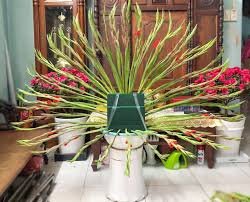
Orchids, known for their captivating beauty and delicate fragrance, are not only admired for their ornamental value but also celebrated in culinary cultures around the world. These exquisite flowers, with their subtle flavor and elegant appearance, have been prized for centuries as a gourmet ingredient in a variety of culinary traditions. In this article, we delve into the enchanting world of orchids in culinary culture, exploring their diverse culinary uses, cultural significance, and culinary artistry.
**1. Edible Orchids:**
While not all orchid species are edible, several varieties have been cultivated for their culinary value. Edible orchids are prized for their delicate petals, which possess a subtle flavor profile reminiscent of cucumber or green beans. Common edible orchids include the Cymbidium, Dendrobium, and Phalaenopsis species, which are widely used in Asian cuisines such as Chinese, Thai, and Vietnamese.
**2. Culinary Uses:**
Edible orchids are used in a variety of culinary applications, both raw and cooked, to enhance the flavor and presentation of dishes. In Asian cuisines, orchids are often used as garnishes for salads, soups, and stir-fries, adding a pop of color and a hint of freshness to the dish. Orchid petals can also be candied or preserved in syrup for use in desserts and confections, such as cakes, pastries, and ice creams.
**3. Cultural Significance:**
In many cultures, orchids hold symbolic significance and are associated with prosperity, abundance, and good fortune. In Chinese culture, orchids are revered as symbols of refinement and elegance, often featured in traditional tea ceremonies and festive banquets as a sign of hospitality and respect. In Thai cuisine, orchids are used to decorate royal feasts and ceremonial dishes, symbolizing the beauty and richness of the natural world.
**4. Culinary Artistry:**
Chefs and culinary artists around the world have embraced edible orchids as a creative and sophisticated ingredient in their culinary creations. From haute cuisine to contemporary fusion dishes, orchids are used to elevate the visual appeal and flavor complexity of gourmet dishes. Chefs experiment with innovative techniques such as molecular gastronomy and edible flower garnishes to showcase the delicate beauty and subtle flavor of orchids in their culinary masterpieces.
**5. Health Benefits:**
In addition to their culinary appeal, edible orchids are also valued for their potential health benefits. Orchids are rich in antioxidants, vitamins, and minerals, which may help boost immunity, support digestive health, and promote overall well-being. In traditional herbal medicine systems, orchids are believed to have medicinal properties that can improve circulation, reduce inflammation, and enhance vitality when consumed in moderation as part of a balanced diet.
**6. Sustainable Harvesting:**
As interest in edible orchids grows, efforts are underway to promote sustainable harvesting practices that ensure the long-term viability of orchid populations and protect their natural habitats. Cultivating orchids for culinary use in controlled environments, such as greenhouses or orchid farms, allows for the sustainable production of edible flowers without depleting wild populations or disrupting fragile ecosystems. By supporting ethical sourcing and cultivation practices, consumers can enjoy the culinary delights of orchids with peace of mind, knowing that they are contributing to the preservation of these botanical treasures for future generations to enjoy.
**Conclusion:**
In conclusion, orchids are not only admired for their beauty but also cherished for their culinary versatility and cultural significance. From traditional Asian cuisines to modern gourmet creations, orchids are valued for their delicate flavor, elegant appearance, and symbolic meaning in culinary culture. By exploring the culinary artistry of orchids, we gain a deeper appreciation for the intricate relationship between food, culture, and nature, and the role that edible flowers play in enriching our culinary experiences and connecting us to the beauty of the natural world.









